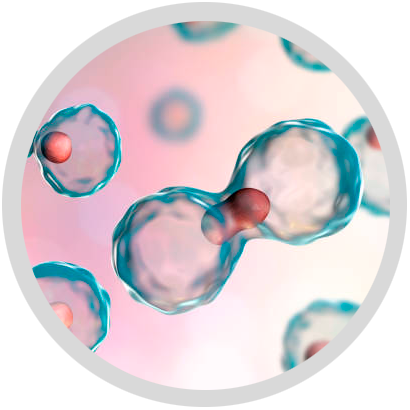Parkinson’s disease is a progressive neurological disorder that affects millions, leading to significant challenges in movement, coordination, and daily life. As we seek effective solutions, Stemedix stands at the forefront of innovation by exploring the transformative potential of stem cell regenerative therapy, aiming to improve patient outcomes. This approach aims to address the underlying causes of Parkinson’s disease, offering hope for restoring lost functions and improving the quality of life for those affected. By understanding the mechanics of this therapy, we can uncover promising advances that could potentially change the treatment landscape for Parkinson’s disease.
Understanding Parkinson’s Disease and Its Impact
When we talk about Parkinson’s disease, we’re dealing with a complex, progressive neurological disorder that affects millions of people worldwide. This condition gradually impairs movement, muscle control, and balance, significantly impacting the quality of life for those affected. To truly grasp the advances in treatment, it’s essential first to understand the neurological foundation of Parkinson’s disease and the current challenges faced by conventional therapies.
The Neurological Basis of Parkinson’s Disease
Dopamine’s Role in Motor Functions
Dopamine plays a crucial role in how our brains control movement. Think of it as a messenger, transmitting signals between nerve cells in areas of the brain responsible for coordinating smooth and purposeful muscle activity. In a healthy brain, dopamine is abundant, allowing us to perform everyday tasks like walking, talking, and even reaching for a glass of water without a second thought.
However, Parkinson’s disease disrupts this delicate balance. As the disease progresses, the brain cells that produce dopamine gradually deteriorate and die. This decline in dopamine levels leads to the hallmark symptoms of Parkinson’s—tremors, stiffness, slowness of movement, and impaired balance. Without enough dopamine, the signals that tell your muscles how to move become weak, making even the simplest activities challenging and frustrating. Understanding this loss of dopamine is critical when considering treatment options, as it underscores the importance of finding therapies that can restore or protect these essential brain cells.

How Parkinson’s Disease Disrupts Brain Pathways
The effects of dopamine loss are not isolated; they extend into multiple brain pathways, causing widespread disruptions. The areas of the brain most affected by Parkinson’s are the substantia nigra and basal ganglia, regions that play pivotal roles in controlling movement. As dopamine production decreases, these brain regions can no longer communicate effectively, leading to the motor symptoms and complications associated with Parkinson’s disease. Over time, the lack of coordination between these pathways intensifies, resulting in more pronounced difficulties with movement, speech, and even non-motor symptoms like mood changes, sleep disturbances, and cognitive decline.
By understanding how Parkinson’s disease disrupts these pathways, we’re better equipped to appreciate the potential of regenerative therapies, such as stem cell treatment, which aim to repair or replace damaged cells and restore the brain’s natural functioning.
Current Limitations of Conventional Parkinson’s Treatments
Traditional Parkinson’s disease treatments primarily manage symptoms rather than targeting the root cause. While medications offer some relief, they have limitations and side effects that highlight the need for more effective therapies.
Levodopa, a common Parkinson’s medication, boosts dopamine levels, offering initial relief. However, over time, higher doses become necessary, leading to side effects like nausea, dizziness, hallucinations, involuntary movements (dyskinesia), and fatigue. Its effectiveness can also diminish, causing unpredictable “off” periods when symptoms resurface. Other medications, such as dopamine agonists and MAO-B inhibitors, bring side effects like fatigue, compulsive behaviors, or sleep issues.
Current treatments don’t address the ongoing loss of dopamine-producing cells. This is where stem cell regenerative therapy offers hope. Unlike traditional medications, it aims to restore damaged cells, addressing the disease’s core issue and potentially providing long-term relief for Parkinson’s patients.
The Science Behind Stem Cell Regenerative Therapy
Stem cell regenerative therapy is reshaping how we approach Parkinson’s disease, offering a more targeted way to manage its symptoms. Understanding the science behind this therapy is essential to grasp its potential in repairing damaged cells, restoring lost functions, and improving the lives of those affected. At Stemedix, we’re committed to utilizing this advanced therapy to bring hope and tangible results to patients with Parkinson’s disease.
How Stem Cells Work in Regenerative Medicine
Stem cells are the foundation of regenerative medicine because of their unique ability to transform into various types of cells. Unlike other cells in the body, stem cells possess two remarkable features: they can differentiate into specialized cell types and can renew themselves. This flexibility makes them invaluable for addressing the damage caused by neurodegenerative conditions like Parkinson’s disease.
Differentiation and Self-Renewal Abilities
Differentiation refers to the process by which stem cells transform into specific cell types, such as neurons or muscle cells. This characteristic is crucial in Parkinson’s disease therapy because it allows stem cells to potentially replace the damaged dopamine-producing neurons that are essential for regulating movement. Meanwhile, the self-renewal ability means stem cells can divide and produce more stem cells, ensuring a steady supply for the body’s repair processes.
In simpler terms, stem cells are like a repair team that can adapt and produce whatever cell type is needed to fix the damage. This adaptability is why stem cell regenerative therapy has gained attention as a promising option for treating neurodegenerative conditions like Parkinson’s disease.
Potential to Restore Damaged Dopamine Neurons
Parkinson’s disease primarily results from the loss of dopamine-producing neurons in the brain. Dopamine plays a vital role in controlling movement, and its deficiency leads to the classic symptoms of Parkinson’s, such as tremors, stiffness, and difficulty with balance. Stem cell regenerative therapy offers a way to restore this lost function by introducing cells that can develop into dopamine neurons.
At Stemedix, we recognize the potential of stem cell therapy to replace these lost neurons, helping to restore dopamine levels and improve motor function. While this is not an overnight solution, the ability of stem cells to transform into the needed cell type offers a promising avenue for symptom management and potentially slowing disease progression.
Types of Stem Cells Used in Parkinson’s Disease Therapy
When it comes to stem cell therapy for Parkinson’s disease, not all stem cells function the same way. At Stemedix, we prioritize using the most effective types to enhance treatment outcomes. The two primary stem cell types showing promise in Parkinson’s research and therapy are Mesenchymal Stem Cells (MSCs) and Induced Pluripotent Stem Cells (iPSCs).
Mesenchymal Stem Cells (MSCs) and Their Benefits
MSCs are multipotent stem cells derived from sources like bone marrow, fat tissue, and umbilical cord blood. These cells can transform into various cell types, such as bone, cartilage, muscle, and neurons. What makes MSCs particularly suitable for Parkinson’s treatment is their anti-inflammatory and immunomodulatory properties, creating a nurturing environment for cell repair and regeneration. MSCs also release growth factors that encourage the survival and repair of damaged neurons, thereby helping to manage Parkinson’s symptoms more effectively and improve motor function. At Stemedix, we leverage MSCs to offer a therapy focused not only on alleviating symptoms but also addressing the cellular damage contributing to disease progression.
Induced Pluripotent Stem Cells (iPSCs) in Parkinson’s Research
iPSCs are adult cells reprogrammed to a stem cell-like state, allowing them to become any cell type. In Parkinson’s therapy, iPSCs can develop into dopamine-producing neurons, making them ideal for replacing lost neurons. Because iPSCs can be derived from a patient’s cells, there’s a lower risk of rejection, allowing for personalized treatment. At Stemedix, we explore the potential of iPSCs to provide advanced, tailored therapies that address individual patient needs.
By integrating MSCs and iPSCs into our treatment approach, Stemedix remains dedicated to offering innovative and comprehensive regenerative solutions for Parkinson’s disease.
Breakthrough Research and Findings on Stem Cell Therapy for Parkinson’s
Recent advancements in stem cell therapy have shown promising results in treating Parkinson’s disease, bringing hope to those living with this challenging condition. At Stemedix, we closely follow the latest research to offer patients the most innovative and effective treatments. By understanding the breakthroughs and findings, you can make informed decisions about the potential benefits of stem cell therapy for Parkinson’s.
Notable Clinical Trials and Studies
Several clinical trials and studies have demonstrated the potential of stem cell therapy to improve the quality of life for Parkinson’s patients. These trials are crucial because they provide evidence-based insights into how stem cells can be harnessed to address the symptoms and progression of the disease.
Improvements Observed in Motor Function and Symptoms
One of the most significant findings from these clinical trials is the improvement in motor function and reduction of symptoms in Parkinson’s patients. In various studies, participants who received stem cell transplants showed enhanced movement abilities, reduced tremors, and overall better control of their muscles. This is a breakthrough because it addresses one of the most debilitating aspects of Parkinson’s—its impact on a person’s ability to move and function independently.
At Stemedix, we emphasize the importance of such data in showing that stem cell therapy has the potential to restore some degree of normalcy to those living with Parkinson’s, enhancing their day-to-day experiences.
The Safety and Efficacy of Stem Cell Transplantations
Safety and efficacy are two critical factors in any treatment, and the same holds true for stem cell therapy. Fortunately, clinical trials have shown that stem cell transplantations are generally safe when conducted under controlled conditions. Most patients did not experience severe adverse reactions, indicating that stem cell therapy could be a viable treatment option for Parkinson’s disease.
However, as with any medical procedure, there are inherent risks, which is why it’s crucial to work with a reputable provider like Stemedix to minimize potential complications. Our priority is to ensure that the procedures are carried out with the highest safety standards. We monitor the latest research findings to refine our protocols continuously, ensuring the best outcomes for our patients.
Long-term Benefits and Potential Risks Identified in Studies
While the short-term improvements seen in stem cell therapy are promising, the long-term effects must also be considered. Researchers are actively studying how stem cell treatments influence Parkinson’s disease progression over time and what risks might arise.
The Longevity of Symptom Relief
One of the most encouraging aspects of stem cell therapy research is the longevity of symptom relief. Unlike conventional treatments, which often require frequent adjustments or increased dosages over time, stem cell therapy has shown the potential to offer sustained benefits. For many patients involved in clinical trials, the improvements in motor skills and reduction of symptoms have persisted for months, even years, following treatment.
This extended relief could significantly improve the quality of life for those with Parkinson’s, reducing the burden of daily medication and potentially slowing the progression of the disease. At Stemedix, we are optimistic about this potential and are dedicated to ensuring that our therapy options provide long-lasting benefits.
Addressing Ethical and Regulatory Considerations
Stem cell therapy for neurodegenerative diseases like Parkinson’s brings ethical and regulatory considerations. It’s crucial that stem cells are sourced ethically and that treatments adhere to strict guidelines. The debate around certain stem cell types, such as embryonic, highlights the need for responsible practices. At Stemedix, we prioritize ethical standards, using only ethically sourced stem cells while strictly following regulatory guidelines. This commitment ensures that our treatments are safe, effective, and aligned with responsible medical care. By staying informed about research and ethical considerations, Stemedix offers advanced, evidence-based therapies for Parkinson’s that are grounded in science and dedicated to your well-being.

How Stemedix is Leading the Way in Regenerative Medicine for Parkinson’s Disease
Stemedix stands as a frontrunner in providing regenerative medicine solutions for Parkinson’s disease. Our mission extends beyond offering stem cell therapy; we’re committed to delivering a comprehensive, individualized approach that truly addresses each patient’s unique needs. Here’s how we make a difference.
In-depth Patient Evaluations and Treatment Plans
At Stemedix, we understand that each patient’s journey with Parkinson’s is distinct. We start by conducting thorough evaluations to gain a deep understanding of your medical history, symptoms, and treatment goals. Our team crafts personalized treatment plans that address your specific challenges, ensuring the therapy you receive is effective and tailored to your needs.
Tailored Regenerative Therapies for Optimal Outcomes
We specialize in designing regenerative therapies that suit your condition. Depending on your medical history, we utilize different stem cells, such as Mesenchymal Stem Cells (MSCs) or Induced Pluripotent Stem Cells (iPSCs). This targeted approach allows us to focus on replenishing the damaged dopamine neurons specific to your Parkinson’s progression, aiming to improve your quality of life.
Expertise and Support from Board-Certified Providers
Every patient at Stemedix is paired with a dedicated Care Coordinator who guides you throughout your treatment. Our coordinators offer clear communication, address your concerns, and ensure you feel supported every step of the way, making your experience as seamless and reassuring as possible.
Operating from our main facility in Florida, Stemedix ensures you receive top-quality care in a state-of-the-art environment. Our board-certified providers bring years of expertise in regenerative medicine backed by the latest research. This combination of experience, personalized care, and accessible location ensures that your journey with us is both effective and compassionate.
What Patients Can Expect from Stem Cell Therapy with Stemedix
At Stemedix, we prioritize making the process of stem cell therapy for a Parkinson patient as clear and supportive as possible. We understand that taking this step can feel overwhelming, so we aim to offer a seamless journey from the initial consultation to post-treatment care. Here’s a detailed look at what you can expect when choosing us for your regenerative therapy.
The Initial Consultation and Treatment Process
Your journey with Stemedix begins with a comprehensive evaluation of your medical history. Our team gathers crucial information about your Parkinson’s diagnosis, symptoms, treatment history, and overall health. This thorough understanding allows us to create a personalized therapy plan tailored to your specific needs. We encourage open communication, so feel free to share any questions or concerns.
After assessing your condition, we guide you through the preparation process for stem cell therapy. Our Care Coordinators provide detailed instructions on what to expect and any pre-treatment guidelines, ensuring you feel comfortable and ready for your treatment.
Post-treatment Care and Long-term Monitoring
At Stemedix, our commitment to your care extends well beyond your stem cell therapy session. We schedule regular follow-ups to monitor your progress, assess treatment response, and adjust your care plan as necessary. We believe that consistent communication is vital for achieving the best outcomes, and our team is here to guide you through every stage of your recovery.
Recognizing that managing Parkinson’s disease is a long-term journey, we provide continuous support, answer your questions, and offer resources to help you navigate your post-treatment experience for better outcomes. Our goal is to empower you to maintain and improve your quality of life as you continue on your path to wellness.
Stemedix: The Path to Improved Quality of Life
Stemedix is a leading provider of regenerative medicine solutions focused on enhancing the quality of life for patients with various conditions, including Parkinson’s disease. Based in Saint Petersburg, Florida, we combine innovative stem cell therapy with personalized care tailored to the unique needs of each individual. Our team of board-certified providers conducts thorough evaluations to create customized treatment plans that target the underlying causes of your condition. We emphasize ethical practices and patient safety, ensuring that our patients receive the most effective therapies available. By choosing stem cell therapy for Parkinson’s with Stemedix, you’re taking proactive steps toward managing Parkinson’s disease, addressing its root causes rather than just the symptoms. Our commitment to comprehensive support continues from your initial consultation through post-treatment care, ensuring you have guidance at every step.
If you’re ready to explore how stem cell therapy can transform your experience with Parkinson’s disease, contact Stemedix at (727) 456-8968 today to begin your journey to improved health and well-being.


 St. Petersburg, Florida
St. Petersburg, Florida
